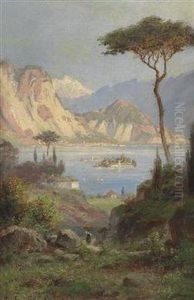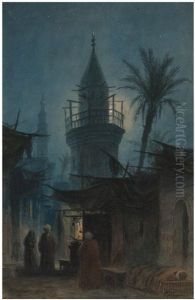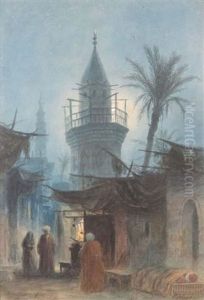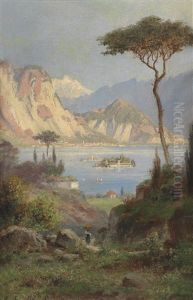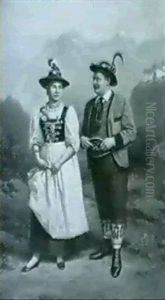Hermann Ludwig Heubner Paintings
Hermann Ludwig Heubner was a German artist known for his work as a painter and illustrator. Born on December 10, 1801, in Dresden, Heubner developed an affinity for the arts at a young age. He began his artistic training at the Dresden Academy of Fine Arts, where he was influenced by the teachings of Caspar David Friedrich, a key figure in the German Romantic movement. Heubner's early works were characterized by a romantic sensibility, often focusing on landscapes and historical themes.
Throughout his career, Heubner demonstrated versatility by exploring different styles and subjects. He was skilled in both oil painting and watercolor, and his oeuvre includes portraits, genre scenes, and illustrations for books. Although he never achieved the same level of fame as some of his contemporaries, Heubner's work was respected among his peers in the Dresden art community.
Heubner's contributions extended beyond his own creations; he was also committed to the education of future generations of artists. In 1834, he was appointed professor at the Dresden Academy, where he taught for many years. His influence as an educator helped shape the artistic development of the region during the mid-19th century.
Over the years, Heubner's style evolved to reflect the changing artistic trends of his time. While he maintained elements of romanticism, he also incorporated aspects of realism, which was gaining popularity. This blend of styles is evident in his later works, which often depicted scenes from everyday life with a heightened sense of naturalism.
Hermann Ludwig Heubner passed away on February 27, 1882, in Dresden. Despite being less well-known today, during his lifetime, he contributed meaningfully to the German art scene and left a lasting impact through his paintings and his role as an educator. His works can still be found in various art collections and museums, offering insights into the artistic transitions that occurred in Germany during the 19th century.
